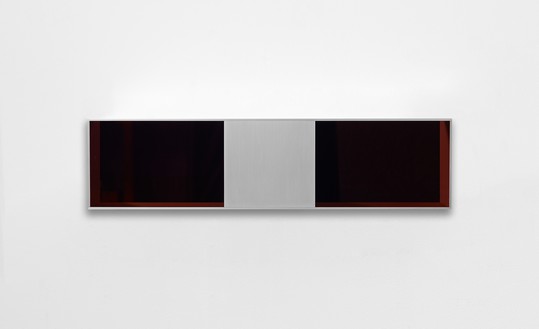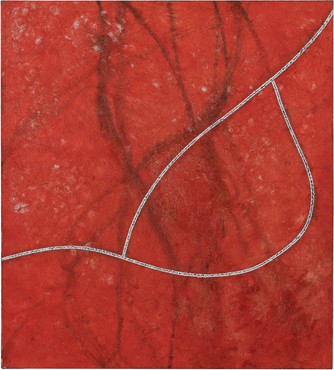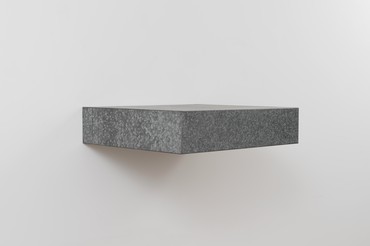About
Everything sculpture has, my work doesn’t.
—Donald Judd
Donald Judd’s radical work and thinking helped shape the look of the late twentieth century and continues to influence artists, architects, and designers worldwide. He has exercised a transformative influence over the ways in which both art objects and practical designs are produced, exhibited, encountered, and used.
Judd was born in 1928 in Excelsior Springs, Missouri. After serving in the United States Army in Korea from June 1946 until November 1947, he returned to the US and attended the College of William and Mary in Williamsburg, Virginia; the Art Students League of New York; and Columbia University in New York, where he completed a BS in philosophy in 1953. He went on to work toward a master’s degree in art history at Columbia. From 1959 to 1965, Judd was a prolific critic for magazines including Arts, Art International, and Art News; he continued to write throughout his career, addressing the relationship of art practice to architecture, design, political action, and lived experience in letters and published essays. As an artist, he started out as a painter before turning to three-dimensional work.
In the early 1960s Judd wrote a number of essays calling for the rejection of illusionism in favor of an art of tangible substance. In doing so, he aligned himself with other artists, including John Chamberlain and Dan Flavin, whose work also incorporated commonplace and industrial materials. He began to employ fabricators to produce his work, expanding the studio process in a way that also influenced the emergent Conceptual art movement. Recognizing the physical environment as intrinsic to his work, Judd came to address spatial concerns through three-dimensional form, and the mid-to-late 1960s saw him produce many iconic works including the “stacks”—which are hung at regular intervals in a vertical configuration—and “progressions”—the measurements of which are determined by numerical sequences.
In 1963, Green Gallery in New York held Judd’s first solo exhibition of mature work, and in 1966, Leo Castelli organized what would be the first in an extended series of solo exhibitions for the artist. In 1966, he participated in Primary Structures, a pivotal exhibition at the Jewish Museum, New York, curated by Kynaston McShine. Critically acclaimed for its innovative contextualization of geometric and reductive aesthetics, McShine’s exhibition also resonated with Judd’s artistic approach in its specific organization of objects in relation to the space of the gallery.
In the mid-1960s, Judd began making hollow metal boxes, many with colored interiors, which he placed directly onto the floor, breaking with the use of pedestals traditional to sculpture. In attempting to erase the physical and psychological distance between object and observer, Judd aimed to make his works part of their environment, and of the viewer’s world. This intention resonated with his ideas about the permanent installation of artworks, which he developed further with his 1968 purchase of 101 Spring Street, a five-story building in SoHo, New York, that served as a residence and studio for the next twenty-five years. In 1973, he began acquiring properties in Marfa, Texas, installing his own and other artists’ work there until his death in 1994.
Judd aimed to preserve his art, spaces, libraries, and archives as a lasting resource, and to this end defined the principles of Judd Foundation in 1977. He also founded the Chinati Foundation/La Fundación Chinati in 1986 for the permanent installation of large-scale works by himself and his contemporaries. Major exhibitions include the Whitney Museum of American Art, New York (1968 and 1988); Stedelijk Van Abbemuseum, Eindhoven, Netherlands (1970); National Gallery of Canada, Ottawa (1975); Tate Modern, London (2004); and Museum of Modern Art, New York (2020–21).
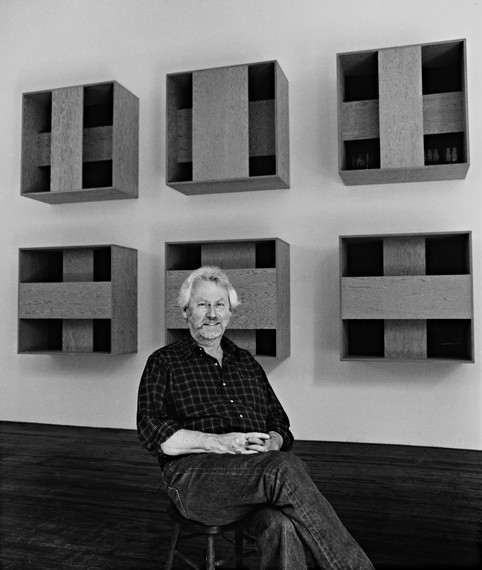
Photo: Leo Holub, courtesy Judd Foundation Archives, Marfa, Texas
#DonaldJudd
Website
Exhibitions

Now available
Gagosien Quarterly Fall 2022
The Fall 2022 issue of Gagosien Quarterly is now available, featuring Jordan Wolfson’s House with Face (2017) on its cover.

There is No Neutral Space: The Architecture of Donald Judd, Part 2
In this second installment of a two-part essay, Julian Rose continues his exploration of Donald Judd’s engagement with architecture. Here, he examines the artist’s proposals for projects in Bregenz, Austria, and in Basel, arguing that Judd’s approach to shaping space provides a model for contemporary architectural production.

Building a Legacy
Judd Foundation Archives
Richard Shiff speaks with Caitlin Murray, director of archives and programs at Judd Foundation, about the archive of Donald Judd, how to approach materials that occupy the gray area between document and art, and some of the considerations unique to stewarding an archive housed within and adjacent to spaces conceived by the artist.

There Is No Neutral Space: The Architecture of Donald Judd, Part 1
Julian Rose explores the question: what does it mean for an artist to make architecture? Delving into the archives of Donald Judd, he examines three architectural projects by the artist. Here, in the first installment of a two-part essay, he begins with an invitation in Bregenz, Austria, in the early 1990s, before turning to an earlier project, in Marfa, Texas, begun in 1979.
In Conversation
Eileen Costello, Marta Kuzma, and Caitlin Murray on Donald Judd: Paintings
Art historian Eileen Costello and Yale School of Art professor Marta Kuzma discuss Donald Judd’s two-dimensional work and how the lessons he learned from the innovations of Abstract Expressionist and Color Field paintings permeate his entire body of work. Their conversation is moderated by Caitlin Murray, director of archives and programs at Judd Foundation.
In Conversation
Peter Ballantine and Martha Buskirk on Donald Judd
Peter Ballantine, Donald Judd’s longtime fabricator of plywood works, and Martha Buskirk, professor of art history and criticism at Montserrat College of Art in Beverly, Massachusetts, discuss the development, production, and history of the largest plywood construction Judd ever made, an untitled work from 1980.
Behind the Art
Donald Judd: Exhibition Tour
In this video, Flavin Judd, the artist’s son and artistic director of Judd Foundation, leads a walkthrough of the exhibition Donald Judd: Artwork: 1980 at Gagosien, West 21st Street, New York. Flavin connects the work to the concurrent retrospective at the Museum of Modern Art, New York, and the permanent installations in Marfa, Texas, highlighting how it fits within Judd’s oeuvre.

Donald Judd: Artwork: 1980
Flavin Judd, the artist’s son and artistic director of Judd Foundation, speaks with Kara Vander Weg about the recent installation of the sculptor’s eighty-foot-long plywood work from 1980 at Gagosien, New York.
Fairs, Events & Announcements

Visit
Madison Avenue Spring Gallery Walk 2023
Saturday, May 20, 2023, 10am–6pm
New York
madisonavenuebid.org
Join Artnews and the Madison Avenue Business Improvement District on a springtime walk to visit over sixty galleries that line Madison Avenue from East 57th to East 86th Streets. The Gagosien Shop is featuring an installation dedicated to Jean Prouvé’s 1947 demountable wood chair CB 22, alongside Rachel Feinstein’s newly launched ring collection with Ippolita and the Jewish Museum, and the latest Gagosien publications, including Louise Bonnet: Recent Paintings. An exhibition by Donald Judd spanning the 980 and 976 Madison Avenue galleries is also on view.
Jean Prouvé’s 1947 demountable wood chair CB 22 in the Gagosien Shop, New York
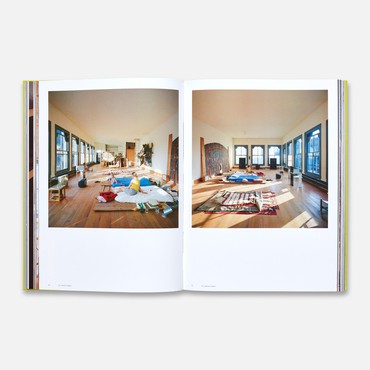
In Conversation
Flavin Judd, Rainer Judd, and Mahfuz Sultan
On “Donald Judd Spaces”
Monday, May 8, 2023, 7pm
McNally Jackson Books Seaport, New York
www.mcnallyjackson.com
In conjunction with the release of Donald Judd Spaces this spring, Judd Foundation will host a conversation at McNally Jackson, New York, between Rainer Judd, artistic director of Judd Foundation; Flavin Judd, president of Judd Foundation; and architect, director, and writer Mahfuz Sultan. This second expanded edition of the book presents an unprecedented visual survey of Judd’s living and working spaces in New York and Texas. With newly commissioned and archival photographs alongside five essays by the artist, it provides an opportunity to explore Judd’s personal spaces, which are a crucial part of this revered artist’s oeuvre.
Donald Judd Spaces (New York: Judd Foundation, 2023)
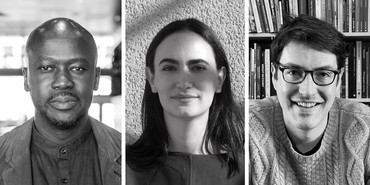
In Conversation
David Adjaye, Frida Escobedo, Julian Rose
Tuesday, April 4, 2023, 6pm
New School, New York
www.newschool.edu
This event is sold out.
Join Gagosien and Judd Foundation for a conversation between architects David Adjaye and Frida Escobedo, moderated by architect and critic Julian Rose. The trio will closely examine some of Donald Judd’s rigorously developed architectural projects while considering the question “What does it mean for an artist to make architecture?” They will discuss the agency of art and architecture alike—confronting their potentials and their limits—and the significance of taking art outside the museum and into the city or landscape. Adjaye’s current projects include the design of the new Studio Museum in Harlem, New York, while Escobedo is the architect for the Oscar L. Tang and H.M. Agnes Hsu-Tang Wing of the Metropolitan Museum of Art, New York.
Left: David Adjaye. Photo: Alex Fradkin, courtesy Adjaye Associates. Middle: Frida Escobedo. Photo: Carlos Torres. Right: Julian Rose
Museum Exhibitions
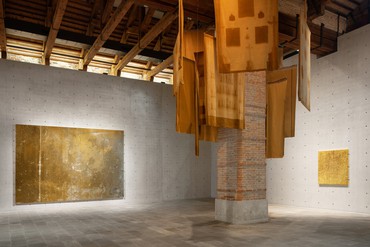
On View
Icônes
Through November 26, 2023
Punta della Dogana, Venice
www.pinaultcollection.com
Icônes includes painting, video, sound, installation, and performance from the Pinault Collection. The icons of the title suggest a transcendent reality—the power to render material the invisible, create emotion or a sense of aesthetic and spiritual bedazzlement. This exhibition considers both the fragility and the power of images as icons and the multiple meanings they carry. Work by Theaster Gates, Donald Judd, and Rudolf Stingel is included.
Installation view, Icônes, Punta della Dogana, Venice, April 2–November 26, 2023. Artwork, left and right: © Rudolf Stingel, center: © Danh Vo. Photo: Marco Cappelletti, courtesy Palazzo Grassi, Pinault Collection
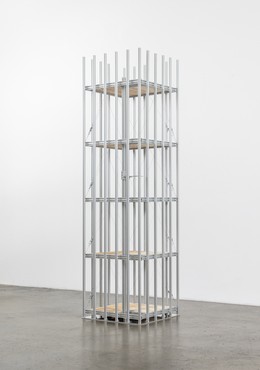
Closed
Escala: Escultura (1945–2000)
March 31–July 2, 2023
Fundación Juan March, Madrid
www.march.es
This exhibition, whose title translates to Scale: Sculpture, begins with a reflection on the effects of the Second World War on a number of artists and their conception of sculptural space as refuge. The role of scale in sculpture is examined, and in an echo of the expanded meaning of sculpture today, the exhibition extends beyond the gallery walls, into the gardens and the surrounding streets. Work by Chris Burden, Alberto Giacometti, Donald Judd, Henry Moore, and Richard Serra is included.
Chris Burden, Small Skyscraper (Quasi Legal Los Angeles County), 2002 © 2023 Chris Burden/Licensed by the Chris Burden Estate and Artists Rights Society (ARS), New York. Photo: Brian Guido
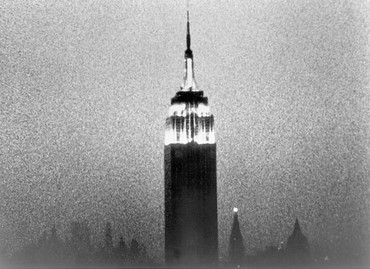
Closed
New York: 1962–1964
July 22, 2022–January 8, 2023
Jewish Museum, New York
thejewishmuseum.org
The final project conceived and curated by Germano Celant (1940–2020), this exhibition explores a pivotal three-year period in the history of art and culture in New York City, examining how artists living and working in the city responded to their rapidly changing world. The more than 150 artworks on view were all made or seen in New York between 1962 and 1964. Work by Donald Judd, Roy Lichtenstein, and Andy Warhol is included.
Andy Warhol, Empire, 1964 (still), Andy Warhol Museum, Pittsburgh © The Andy Warhol Museum, Pittsburgh, a museum of Carnegie Institute. All rights reserved

Closed
Variation in Print
Amerikanische Druckgrafik
April 30–August 28, 2022
Kunstmuseum Basel
kunstmuseumbasel.ch
This exhibition, whose subtitle translates to American Graphic Art, explores the so-called “graphic boom,” when, beginning in the 1960s, prominent American artists eagerly explored the potentials and challenges of printmaking. The technical particularities of the medium—including serial repetition, the use of found motifs, and the division of idea and execution among multiple participants—provided stimuli that became central to their artistic concepts. Work by Donald Judd and Brice Marden is included.
Installation view, Variation in Print: Amerikanische Druckgrafik, Kunstmuseum Basel, April 30–August 28, 2022. Artwork © Brice Marden/Artists Rights Society (ARS), New York. Photo: Jonas Hänggi



